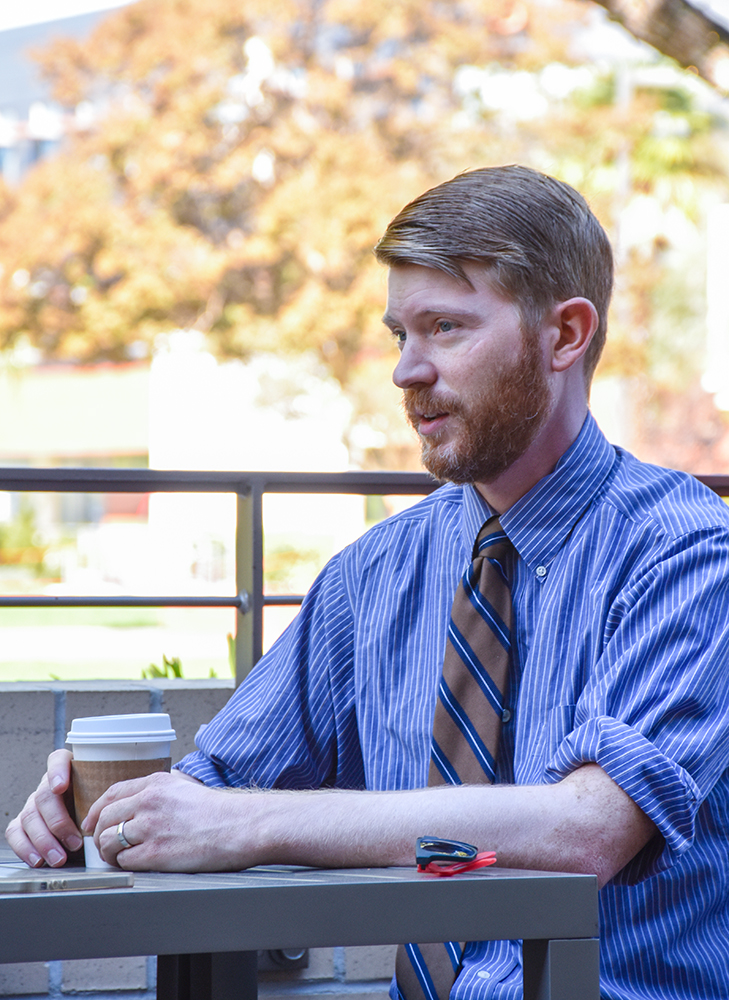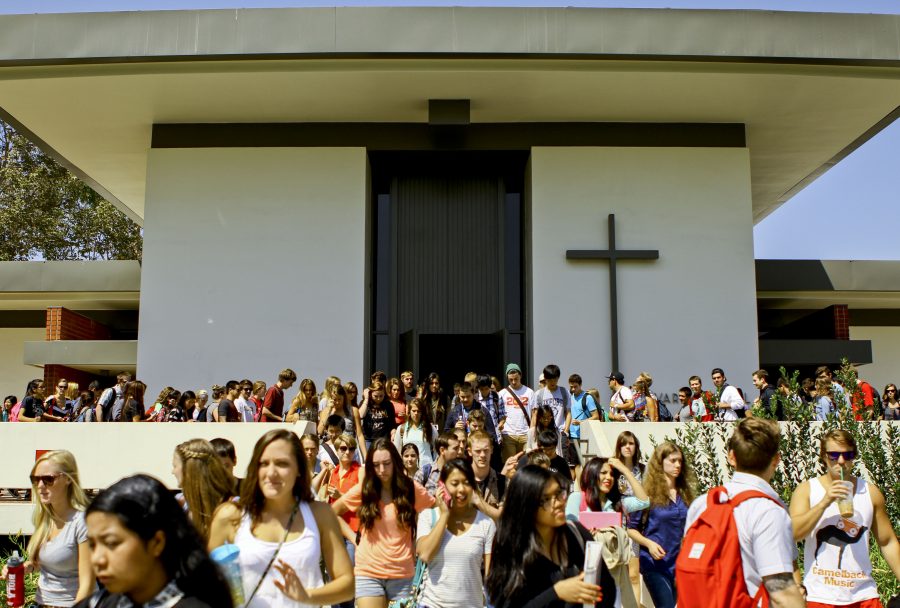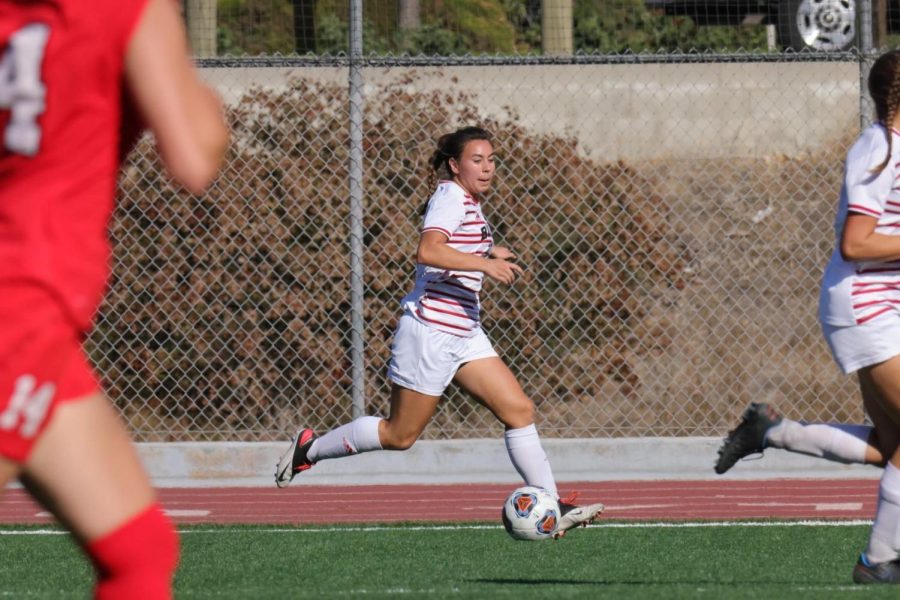Author, journalist, church elder, husband — Brett McCracken is most widely known for his millennial-aimed novels regarding faith and journalistic ventures. However, the various aspects of his life integrate in beautiful ways, according to his technique of balancing them.
Most well-known for his books Hipster Christianity and Gray Matters, as well as his writings for Christianity Today and his appearance on CNN, McCracken surprisingly spends four out of five work days every week behind a desk in the office of the president — writing speech notes and preparing Biola president Barry Corey for his daily schedule and speech talking points. In addition to these responsibilities, McCracken maintains being an elder at his local church, Southlands, as well as working with his wife Kira in Biola administration.
Tell me about your typical schedule. What’s a day in the office look like?
“The thing about this job is that it’s kind of different every day. Part of the interesting thing about my job is I do the Biola magazine with [University Communication and Marketing], so that’s probably 20 percent of my time… Throughout the whole year there’s presidential communication needs. So on any given day, that could include everything from the president’s social media and helping him with communicating on social media, helping him with his communications on email statements and things that are sent out to the Biola community or sent out externally to parents or donors… I usually prepare [Barry Corey, Biola president] with talking points, give him some tips and ideas for good things to say. So there’s a lot of that… I have access to his social media, it’s a combination of the two of us… That’s my job. Make sure he’s prepared.”
What’s life like outside your office at Biola?
“The nice thing for me is that I only work four days a week at Biola, so I have a day off that I can take — any day, it’s usually Friday but it can be any day — that’s the day when I kind of spend time on my own writing, and that includes a fair amount of freelance writing for magazines like Christianity Today, Relevant magazine — I just wrote the cover story for the November-December issue for Relevant on Andrew Garfield, it was about Hacksaw Ridge, the new Mel Gibson movie… A major passion for me is film and art and culture, entertainment. So I do a lot of freelance writing. I do a lot of film reviews for Christianity Today fairly often and book reviews.”
You’re very well-known on this campus for your books. How do you find time to write those?
“That’s where I kind of spend most of my off time and the weekends. So I just finished writing my third book, which is called ‘Uncomfortable.’ The subtitle is, ‘The awkward and essential challenge of Christian community.’ It’s kind of about the challenge of the local church. I literally just finished the manuscript. I’ve spent pretty much a year writing that.”
You’re also involved in ministry at Southlands, what can you say about your responsibilities there?
“I’m an elder there. I have a pastoral life that is pretty time-consuming. So when I’m not at Biola and when I’m not writing, I’m probably doing something with the church. My wife, Kira, and I are both really involved with Southlands and we lead a Life Group and have a lot of involvement with that. It’s cool because so much of what I write about in my books and even helping Barry — President Corey — is related to the church and Christianity so all the areas that are taking up my time, it’s not like they’re pulling me in distinct or conflicting directions. They kind of support each other, I think. And my writing, in different areas, is strengthened by Biola and the church and part of the great thing about being at Biola is I think a lot of my writing is geared toward younger Christians and millennials — “Hipster Christianity” and “Gray Matters” and my next book is the same. So it’s just really helpful to be amidst thousands of students of that age group because I feel in touch, rather than someone who’s just making generalizations about millennials or trying to speak to a group they don’t really know.”
You work in an office with your wife, as she works in Advancement and you in Communications. How do you manage to separate the two worlds so they don’t overwhelm each other?
“We’ve never known anything different, because we met working at Biola. So about five or six years ago — we’ve been married for four years… We just met through proximity, and we started dating and got married and we’ve never known life outside of working at Biola and working in departments that work together. So our professional relationship and collaborating on projects has always been a part of our marriage. So it’s been good. It’s been less of a challenge than we thought it would be, and maybe that’s just because we’ve never known any different… We do have some rules: we try not to talk about Biola or work at home. So we can talk about Biola and work on the drive to and from Biola, we carpool every morning… One of my favorite moments of us working together was the gala in downtown L.A. back in 2015 to launch the campaign at the Ace hotel. That was an event Kira pretty much orchestrated from start to finish. She was in charge, but I had a big role from the president’s perspective: the script of the evening and the message. So it was really neat to work with my wife together so closely on an event that was part of Biola’s history. It was a major historical moment for the university. Wherever we go in life, wherever the future, we’ll be able to look back and say, ‘We were together there, for a moment in Biola University’s history.’”
There’s a lot of life responsibilities you have. How do you integrate all these aspects of your life without getting overwhelmed?
“It’s a challenge, for sure. I think [Kira and I] have to be really organized, and we both are. We’re both very schedule-oriented, calendar-oriented people, and we’re really on the same page with that. So that keeps us sane, just having clarity on what’s happening on any given day schedule-wise… Just making sure we have those spaces to just decompress has been really huge, and has allowed us to have all these things on our plates without going crazy. But like I said earlier, it makes it easier that each area is kind of related and kind of supports each other rather than very opposite, isolated.”







